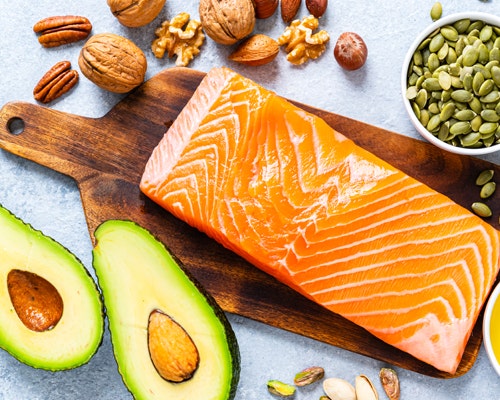"Ugly" Cholesterol
- 1/5/16

It’s not pretty. In fact, it’s downright ugly—“ugly” cholesterol, that is. It can also be a killer.
Cholesterol is divided into the “good” HDL cholesterol, the “bad” LDL cholesterol and the “ugly” cholesterol. It’s the ugly cholesterol, also called “remnant cholesterol,” that is the major one to look out for.
Professor Børge Nordestgaard, Chief Physician at Copenhagen University Hospital and Clinical Professor at the Faculty of Health and Medical Sciences at the University of Copenhagen, explains “ugly” cholesterol. "High ugly cholesterol is the result of high blood levels of normal fat (triglycerides). The most important cause of high ugly cholesterol is overweight and obesity,” Nordestgaard clarifies. Nordestgaard and his colleagues conducted studies on“ugly”cholesterol, the findings of which were recently published in the Journal of American College of Cardiology.
Nordestgaard adds, “LDL cholesterol or 'the bad' cholesterol' is of course bad, but our new study reveals that the ugly cholesterol likewise is the direct cause of atherosclerosis resulting in ischemic heart disease and early death. By examining 73,000 persons, we found that an increase in the ugly cholesterol triples the risk of ischemic heart disease, which is caused by lack of oxygen to the heart muscle due to narrowing or blocking of the coronary arteries."
“I hope this new knowledge will lead to better preventive treatment, including lifestyle changes, as more than one in five individuals in affluent countries suffers from high ugly cholesterol,” Nordestgaard emphasizes.
That’s not all the ugliness of this ugly cholesterol, however. In fact, the risk of ischemic heart disease, which is the leading cause of death worldwide, takes the lives of approximately 17 million people each year. To reiterate, ischemic heart disease is three times higher in those who have high levels of ugly cholesterol.
And while this study originated in Copenhagen, doctors in the United States understand the implications of ugly cholesterol, too—especially since more than one-third of Americans are obese, a major factor in ugly cholesterol.
Khurram Nasir, M.D., M.P.H., director of the High-Risk Cardiovascular Disease Clinic at Baptist Health South Florida Hospital in Miami and assistant professor at Johns Hopkins Ciccaron Center for the Prevention of Heart Disease, says, “The fast food epidemic here is leading to more high triglyceride levels. Processed carbs, sodas and juices increase sugar levels in a short period of time and add calories.” And if you have too much sugar in your diet, then your body converts what's not used for energy into triglycerides—and, as a nation, we’re overdoing it on sugar intake.
So, how do you help fight ugly cholesterol? Practice a healthy diet and lifestyle. Eat a healthy, non-processed, low-sugar diet. Lose weight if you’re carrying around extra pounds. Exercise regularly—most days of the week for at least 30 minutes. Nasir points out, “Exercise raises levels of good cholesterol. Being physically active can indirectly affect ugly cholesterol by decreasing insulin resistance, which can lead to diabetes.” So, be sure to get moving!
Now you know the good, the bad and the ugly. But watch out for the ugly—cholesterol wise.
This information is intended for educational and informational purposes only. It should not be used in place of an individual consultation or examination or replace the advice of your health care professional and should not be relied upon to determine diagnosis or course of treatment.
Cholesterol is divided into the “good” HDL cholesterol, the “bad” LDL cholesterol and the “ugly” cholesterol. It’s the ugly cholesterol, also called “remnant cholesterol,” that is the major one to look out for.
Professor Børge Nordestgaard, Chief Physician at Copenhagen University Hospital and Clinical Professor at the Faculty of Health and Medical Sciences at the University of Copenhagen, explains “ugly” cholesterol. "High ugly cholesterol is the result of high blood levels of normal fat (triglycerides). The most important cause of high ugly cholesterol is overweight and obesity,” Nordestgaard clarifies. Nordestgaard and his colleagues conducted studies on“ugly”cholesterol, the findings of which were recently published in the Journal of American College of Cardiology.
Nordestgaard adds, “LDL cholesterol or 'the bad' cholesterol' is of course bad, but our new study reveals that the ugly cholesterol likewise is the direct cause of atherosclerosis resulting in ischemic heart disease and early death. By examining 73,000 persons, we found that an increase in the ugly cholesterol triples the risk of ischemic heart disease, which is caused by lack of oxygen to the heart muscle due to narrowing or blocking of the coronary arteries."
“I hope this new knowledge will lead to better preventive treatment, including lifestyle changes, as more than one in five individuals in affluent countries suffers from high ugly cholesterol,” Nordestgaard emphasizes.
That’s not all the ugliness of this ugly cholesterol, however. In fact, the risk of ischemic heart disease, which is the leading cause of death worldwide, takes the lives of approximately 17 million people each year. To reiterate, ischemic heart disease is three times higher in those who have high levels of ugly cholesterol.
And while this study originated in Copenhagen, doctors in the United States understand the implications of ugly cholesterol, too—especially since more than one-third of Americans are obese, a major factor in ugly cholesterol.
Khurram Nasir, M.D., M.P.H., director of the High-Risk Cardiovascular Disease Clinic at Baptist Health South Florida Hospital in Miami and assistant professor at Johns Hopkins Ciccaron Center for the Prevention of Heart Disease, says, “The fast food epidemic here is leading to more high triglyceride levels. Processed carbs, sodas and juices increase sugar levels in a short period of time and add calories.” And if you have too much sugar in your diet, then your body converts what's not used for energy into triglycerides—and, as a nation, we’re overdoing it on sugar intake.
So, how do you help fight ugly cholesterol? Practice a healthy diet and lifestyle. Eat a healthy, non-processed, low-sugar diet. Lose weight if you’re carrying around extra pounds. Exercise regularly—most days of the week for at least 30 minutes. Nasir points out, “Exercise raises levels of good cholesterol. Being physically active can indirectly affect ugly cholesterol by decreasing insulin resistance, which can lead to diabetes.” So, be sure to get moving!
Now you know the good, the bad and the ugly. But watch out for the ugly—cholesterol wise.
This information is intended for educational and informational purposes only. It should not be used in place of an individual consultation or examination or replace the advice of your health care professional and should not be relied upon to determine diagnosis or course of treatment.





